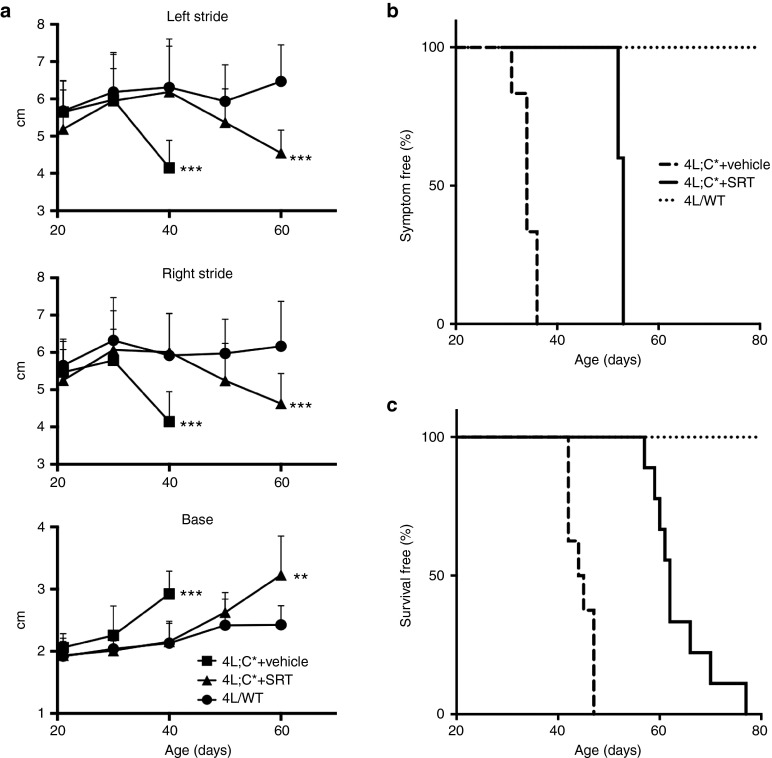Figure 7.
Effect of SRT on gait and longevity of 4L;C* mice. The stride length and distance between the rear paws (base) were periodically measured starting when the mice were 21 days old (a). Data were analyzed using Student's t-test to compare the 4L;C*+vehicle and 4L/WT or 4L;C*+SRT (Genz-682452 dosed IP at 12.5 mg/kg/day from days 5 to 20 and at approximately 60 mg/kg/day in diet thereafter) and 4L/WT; **P < 0.01, ***P < 0.001. The age of disease onset was determined by a significant deviation in gait from that of the 4L/WT mice and is shown as the percent of mice that remained symptom-free (normal gait) at the indicated age (b). The difference between 4L;C*+vehicle and 4L;C*+SRT is highly significant (P < 0.0001) by log-rank (Mantel–Cox) test. The percent of mice that had not reached the criteria for sacrifice at the indicated age is shown in the survival curve (c). The difference between 4L;C*+vehicle and 4L;C*+SRT is highly significant (P < 0.0001) by log-rank (Mantel–Cox) test. SRT, substrate reduction therapy.

